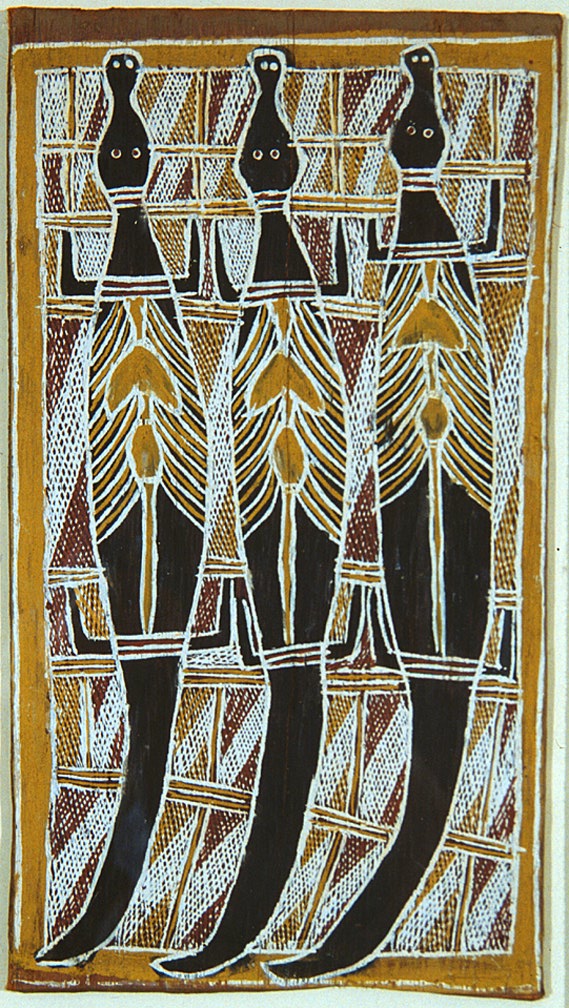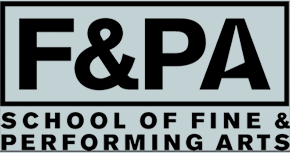
Three Crocodiles
“Three Crocodiles” is an Australian Aboriginal bark painting dating from the 1950s by an unknown artist from the Arnhem Land region in northern, tropical Australia. It is painted with natural earth pigments on bark from the “stringybark” tree (eucalyptus tetradonta).
This seemingly simple painting of three crocodiles on a geometric background is actually a complex and sophisticated conceptual and visual image, rich with religious, aesthetic and social meaning. It is an object of secret significance, fully known only to initiates in the artist’s community. However, several elements of the painting are readable by the public viewer.
Multiple interpretations are inherent in the image and geometric designs, combining a tale from the creation of the universe with personal information about the artist and his community, and connecting the past with the present and the supernatural with the natural, human world.
Crocodiles are associated with the narrative of the Fire Dreaming in which the sacred Ancestor, Baru, the Crocodile Man, created fire and thereafter lost a foot in the fire. Here, the three crocodiles may depict Baru in a progressive time sequence swimming or walking through a fire-y landscape, portrayed as yellow, red, and white cross-hatched stripes. The front feet of the crocodile on the far right are missing. Instead of having the traditional diamond patterned backs (another consequence of the fire), the crocodiles are shown in the “x-ray style,” revealing their inner organs and ribs. The artist’s use of the “x-ray style” communicates his deep knowledge of the Ancestor. The depiction of Baru in the Fire Dreaming narrative is not just a likeness of his animal manifestation; it is the physical embodiment of his spirit. Even the pigments used to make the painting come from rocks embodying the spirit of an Ancestor. The artist, through his knowledge and connection to the Ancestors, brings Baru into the human world.
Brightness and visual shimmer are important elements in the paintings of the Arnhem Land region, expressing the radiance, power, and energy of the Ancestor’s spirit. Brightness is achieved here by the use of pure white pigment against the duller yellow, red, and black and by the shimmering, white cross-hatching. Prominent use of white and black provides a strong structural framework for the composition. The heads and tails of the crocodiles extend above and below the wide, yellow frame of the picture, breaking the rectangular pictorial space and creating energy of forward movement. The sweep of tails, ribs and diagonal stripes heightens the dynamism.
The yellow, red, and white cross-hatched patterns and the horizontal bars provide the background landscape for the Fire Dreaming narrative and simultaneously relate other important information not immediately recognizable to the uninitiated. The designs identify the artist’s clan and his lineage to the Ancestor and may disclose ritual links of the clan to neighboring communities where the Fire narrative spread. They also show a map of the geographic territory of the artist’s community, as well as the Ancestor’s journey across the land.
“Three Crocodiles” is one of fifteen bark paintings donated to the museum in 1962 by Allan Gerdau, through the Carlebach Gallery, New York City. You will find the other paintings of snakes, fish, turtles and a kangaroo by clicking on the museum’s link to the online collection and typing “Australian Aboriginal” in the search box.

